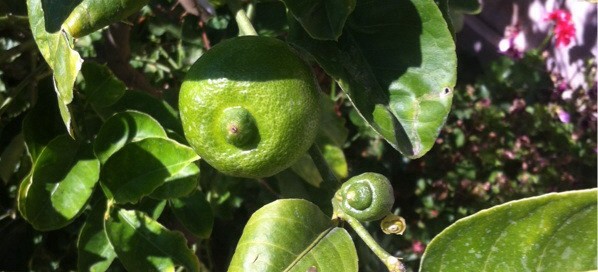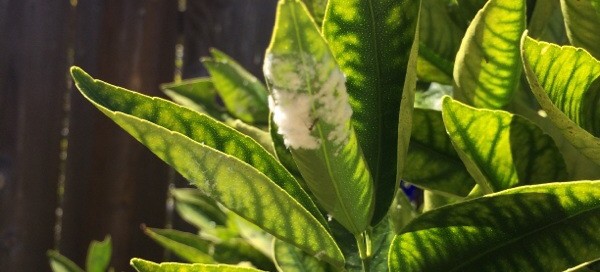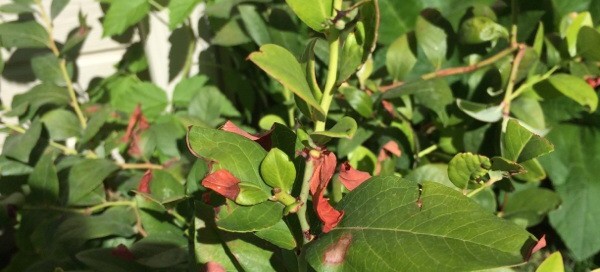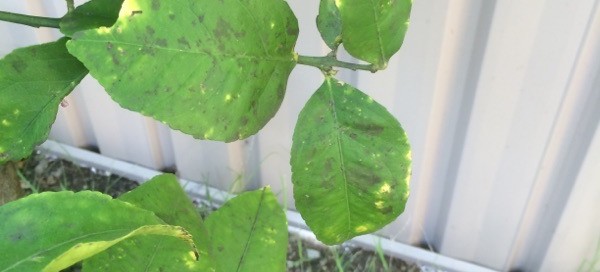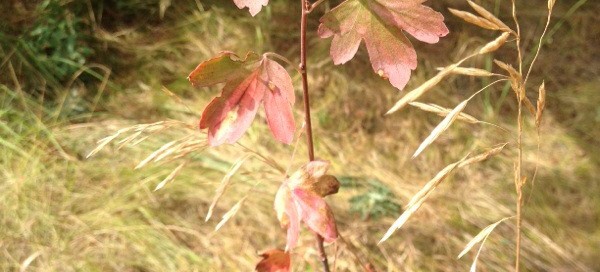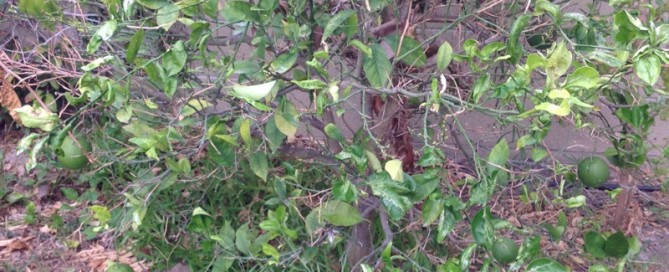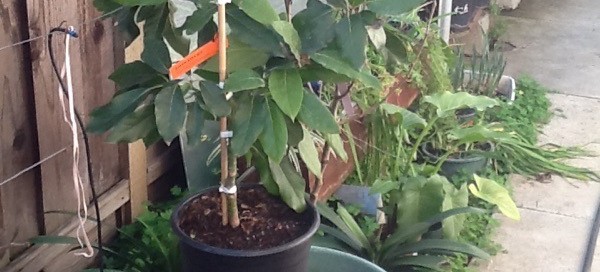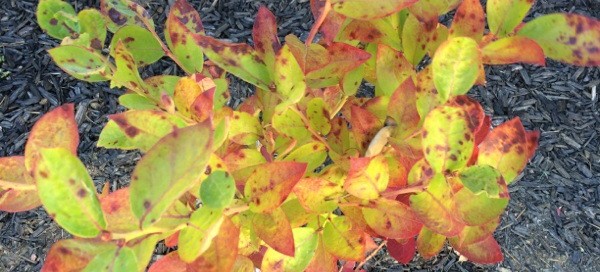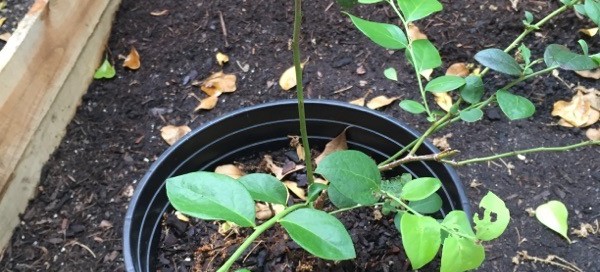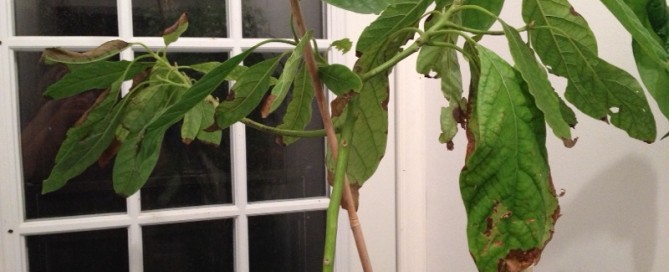Lemon Citrus Fruit
Lemon and lime trees are particularly tricky to identify as their fruit and blossoms can look very similar, especially when they aren’t fully ripe. Lemon and lime trees, however, have several characteristic differences that can help identify them. One good way to distinguish is the leaf. Examine the leaf shape. Lemon trees’ leaves tend to be oblong, elliptical and can grow up to 5 inches long. Lime trees’ leaves are smaller and generally aren’t more than 2 inches long. This appears to be a lemon due to the large leaves.
Another way to tell is by fragrance of both the fruit and the foliage.
Score the rind of the fruit carefully. Lemon trees' fruit will smell like lemons, while limes will display a strong lime scent.
Remove a leaf, crush it and smell the leaf’s oils. The lemon tree’s leaves will have a strong lemon odor, while the lime leaves will smell like lime. This will help you confirm, but appears to be an immature lemon.
